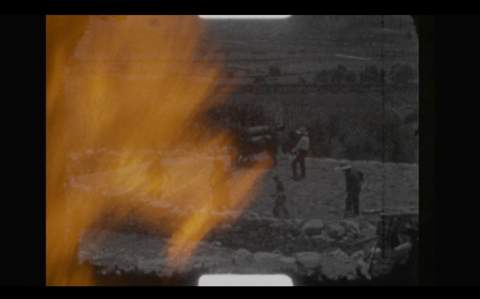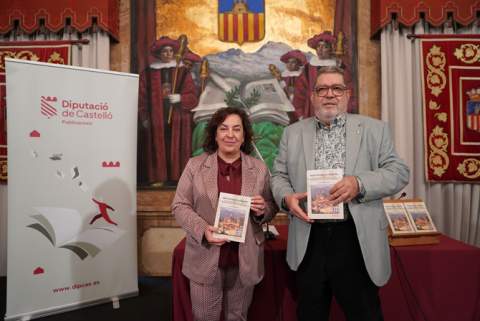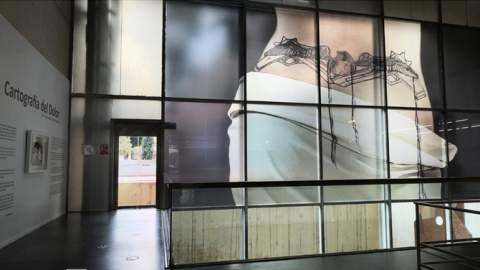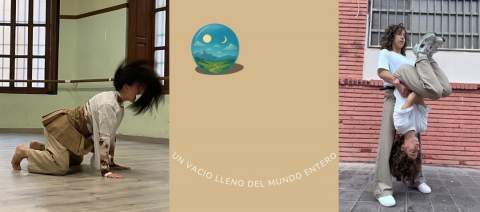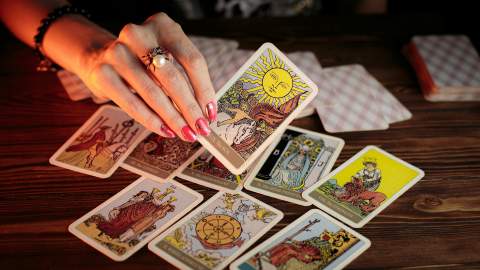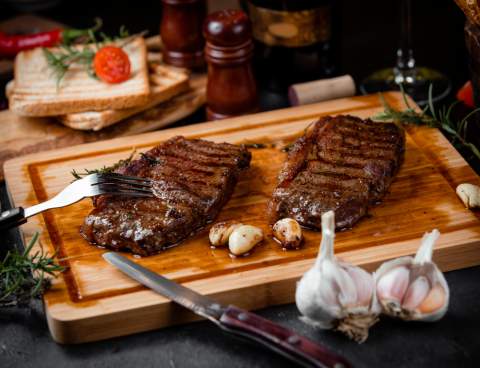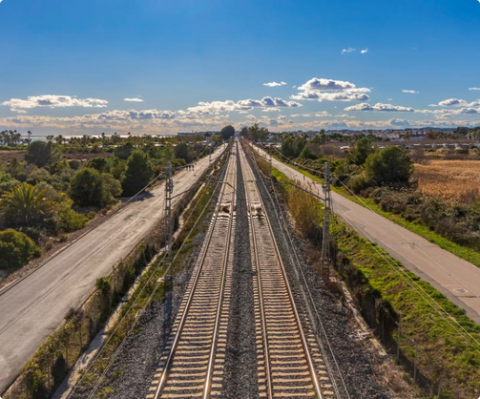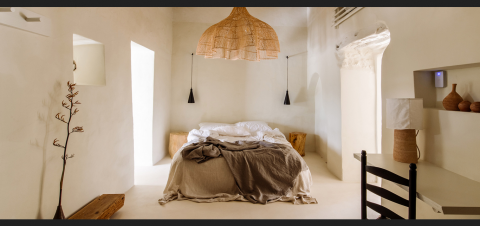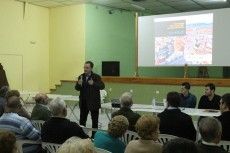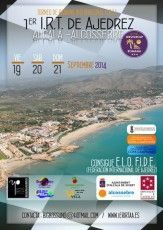A Trip to Culla and Catí
Organized by the Townhall of Alcalá/Alcossebre, in order to visit
the expositions "Pulchra Magistri", The Splendour of (Northern) Maestrazgo
It was a brilliant idea of our local government to celebrate the Women´s Day visiting the expositions, organized in Culla and Cati by the Foundation "La Luz de las Imágenes", under the title Pulchra Magistri, the splendour of (Northern) Maestrazgo.
On Thursday 6th of March two buses left, one from Alcalá and one from Alcossebre, heading the first to Culla and the second to Catí,
After driving along steep and winding roads across the Atalayas de Alcalá and the mountains next to Albocácer, enjoying a landscape of scrubs, olive and flourishing almond trees, we arrived at Catí where we split up in two groups, with a guide each, to visit the old Townhall and the church.
The old Townhall is an impressive, 15th century building, the best preserved and documented medieval Valencian Townhall. Climbing a steep stone staircase you arrive at the restored Chapter Hall and Exchange with its beautiful wooden ceiling and the enigmatic numbers on the stone banks which probably referred to the guilds´representatives. No idea either about the origin of the small restored room nearby, with its kind of blue dome, maybe the room where contracts were made or a chapel.
In the church two kinds of ceiling were discovered, one dating from the 14th century, the other from the 17th century, when this kind of "graffitti" was quite in fashion.
During the exhibition the church houses a big number of 15th century treasures, partly lent by museums from Barcelona, Madrid and Valencia.There are superb altarpieces and paintings, gold work, boundary crosses and papal bulls.
After the extensive visit to the church there was still time for a walk across the centre with its mansions, armcoats and marvellous, Gothic windows with its typical slim column in the centre, evidence of Catí´s splendour in the 15th century, when the wool trade was flourishing.
After a tasty and abundant meal at the well known restaurant el Prigó, where we met the people from Alcalá who had come from Culla, we went on the bus again which, after driving along a steep and winding road, arrived at Culla about half past four.
Unfortunately the radiant blue sky of the morning had changed into a grey, clouded one, so 1.100 m high Culla was freezing cold. Anyway, we didn´t get too cold, as we had to climb quite a lot across pebbled streets, thus loosing some of the calories put on in the Prigó.
Culla, an Arab town und whose name means placed on top, was conquered by the Christians in the 13th century; later on it was given to the Templars and after their dissolution, to the military order of Montesa.
Today its a beautiful, picturesque and completely restored village, worth one or more visits
In the old hospital you´ll find objects dating from Prehistoric times to early 13th century Christianity, with an outstanding Virgin of the Orange from Olocau del Rey.
In the former prison you are shown 13th century paintings and altarpieces, with the marvellous altarpiece from Albocacer and an outstanding flemish tapestry representing the Last Supper.
There doesn´t remain anything from the old church as today`s church dates from the 18th century..The filigree casettes of the altarpiece have been restored. In there centre there is the superb stone Gothic statue of the Saviour, the Patron Saint of Culla.
After crossing steep, winding streets we walked along the walls next to the former Arab castle of which scarcely anything left.
At half past seven we were just happy to sit in the warm bus, which brought us savely to Alcossebre, where we arrived at about 8 o`clock.
the expositions "Pulchra Magistri", The Splendour of (Northern) Maestrazgo
It was a brilliant idea of our local government to celebrate the Women´s Day visiting the expositions, organized in Culla and Cati by the Foundation "La Luz de las Imágenes", under the title Pulchra Magistri, the splendour of (Northern) Maestrazgo.
On Thursday 6th of March two buses left, one from Alcalá and one from Alcossebre, heading the first to Culla and the second to Catí,
After driving along steep and winding roads across the Atalayas de Alcalá and the mountains next to Albocácer, enjoying a landscape of scrubs, olive and flourishing almond trees, we arrived at Catí where we split up in two groups, with a guide each, to visit the old Townhall and the church.
The old Townhall is an impressive, 15th century building, the best preserved and documented medieval Valencian Townhall. Climbing a steep stone staircase you arrive at the restored Chapter Hall and Exchange with its beautiful wooden ceiling and the enigmatic numbers on the stone banks which probably referred to the guilds´representatives. No idea either about the origin of the small restored room nearby, with its kind of blue dome, maybe the room where contracts were made or a chapel.
In the church two kinds of ceiling were discovered, one dating from the 14th century, the other from the 17th century, when this kind of "graffitti" was quite in fashion.
During the exhibition the church houses a big number of 15th century treasures, partly lent by museums from Barcelona, Madrid and Valencia.There are superb altarpieces and paintings, gold work, boundary crosses and papal bulls.
After the extensive visit to the church there was still time for a walk across the centre with its mansions, armcoats and marvellous, Gothic windows with its typical slim column in the centre, evidence of Catí´s splendour in the 15th century, when the wool trade was flourishing.
After a tasty and abundant meal at the well known restaurant el Prigó, where we met the people from Alcalá who had come from Culla, we went on the bus again which, after driving along a steep and winding road, arrived at Culla about half past four.
Unfortunately the radiant blue sky of the morning had changed into a grey, clouded one, so 1.100 m high Culla was freezing cold. Anyway, we didn´t get too cold, as we had to climb quite a lot across pebbled streets, thus loosing some of the calories put on in the Prigó.
Culla, an Arab town und whose name means placed on top, was conquered by the Christians in the 13th century; later on it was given to the Templars and after their dissolution, to the military order of Montesa.
Today its a beautiful, picturesque and completely restored village, worth one or more visits
In the old hospital you´ll find objects dating from Prehistoric times to early 13th century Christianity, with an outstanding Virgin of the Orange from Olocau del Rey.
In the former prison you are shown 13th century paintings and altarpieces, with the marvellous altarpiece from Albocacer and an outstanding flemish tapestry representing the Last Supper.
There doesn´t remain anything from the old church as today`s church dates from the 18th century..The filigree casettes of the altarpiece have been restored. In there centre there is the superb stone Gothic statue of the Saviour, the Patron Saint of Culla.
After crossing steep, winding streets we walked along the walls next to the former Arab castle of which scarcely anything left.
At half past seven we were just happy to sit in the warm bus, which brought us savely to Alcossebre, where we arrived at about 8 o`clock.



